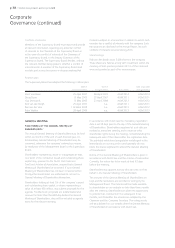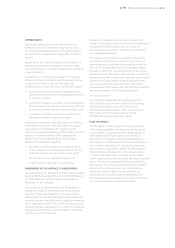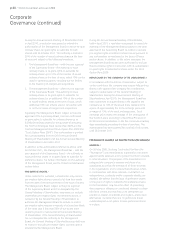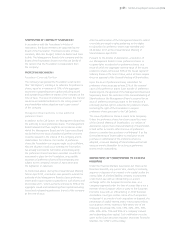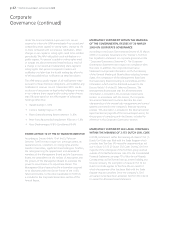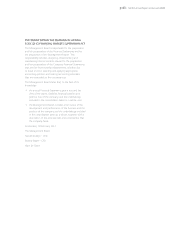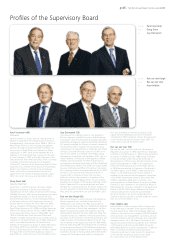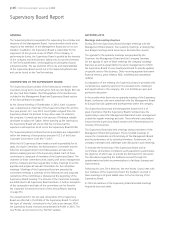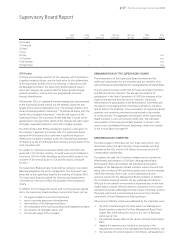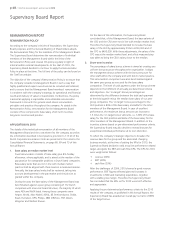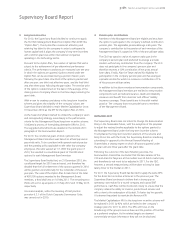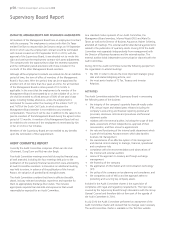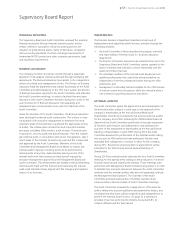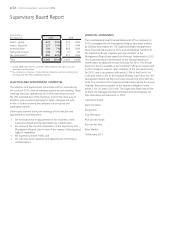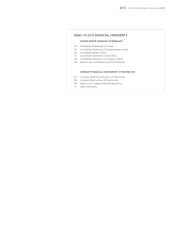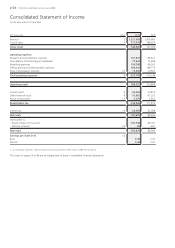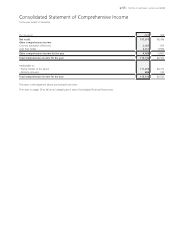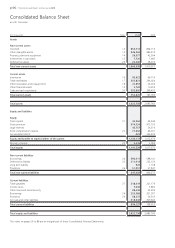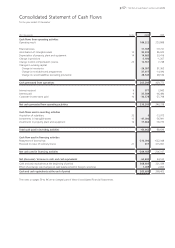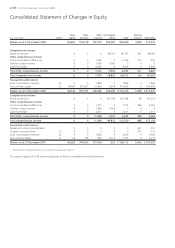TomTom 2010 Annual Report Download - page 50
Download and view the complete annual report
Please find page 50 of the 2010 TomTom annual report below. You can navigate through the pages in the report by either clicking on the pages listed below, or by using the keyword search tool below to find specific information within the annual report.p 48 / TomTom Annual Report and Accounts 2010
Supervisory Board Report
REMUNERATION REPORT
REMUNERATION POLICY
According to the company’s Articles of Association, the Supervisory
Board proposes, and the General Meeting of Shareholders adopts,
the Remuneration Policy for the members of the Management Board.
The Supervisory Board determines the remuneration of individual
members of the Management Board within the limits of the
Remuneration Policy and reviews this policy regularly in light of
internal and/or external developments. At the start of 2010, the
Supervisory Board decided to continue to apply the Remuneration
Policy in place at that time. The full text of the policy can be found on
the TomTom website.
The objective of the company’s Remuneration Policy is to ensure that
the company rewards its Management Board in such a way that
highly qualified and expert executives can be recruited and retained,
and to ensure that the Management Board members’ remuneration
is consistent with the company’s strategy, its operational and financial
results and delivery of value to shareholders. Furthermore, the policy
is aimed at applying a responsible and sustainable remuneration
framework in line with the general result-driven remuneration
principles and practices throughout the company. As stated in the
Remuneration Policy, remuneration for the Management Board
consists of four components: base salary, short-term incentive,
long-term incentive and pension.
APPLICATION IN 2010
The details of the individual remuneration of all members of the
Management Board and the costs thereof to the company as well as
the information described in best practice provision II.2.13 (d) of the
Dutch Corporate Governance Code are presented in the notes to the
Consolidated Financial Statements, on page 68, 69 and 70 of this
Annual Report.
1. Base salary at median market level
Fixed remuneration consists of base salary plus 8% holiday
allowance, where applicable, and is aimed at the median of the
pay practice for comparable positions in Dutch listed companies.
Base salary levels that are not in line with median market
practice shall be aligned with these levels in a measured manner.
Annually, the base salary levels shall be reviewed, taking into
account developments in the pay market and the job size as
graded within the company.
During the year, the base salary of the Management Board was
benchmarked against a peer group consisting of 112 Dutch
companies with a two-tier board structure, the majority of which
were AEX and AMX listed. Among these companies were
Aegon, Ahold, Akzo Nobel, ASML, BE Semiconductor, Draka,
Exact, Heineken, KPN, Philips, SBM Offshore, TNT, Wavin,
Wegener and Wolters Kluwer.
On the basis of this information, the Supervisory Board
concluded that, of the Management Board, the base salaries of
the CEO and the CFO were not in line with median market level.
Therefore the Supervisory Board decided to increase the base
salary of the CEO by approximately 25% to €250,000 and of
the CFO to €400,000. With these adjustments, the salary of the
CFO was at the median market level, and a first measured step
was taken to bring the CEO’s salary closer to the median.
2. Short-term incentive
The percentage-of-salary bonus scheme is aimed at creating one
uniform bonus structure throughout the organisation. It aligns
the management bonus scheme with the bonus structure for
other staff within the company and with Dutch market practice.
This remuneration component was also benchmarked against
the same peer group as was used for the base salary
comparison. The level of cash payment under the bonus scheme
depends on the fulfilment of annually pre-determined criteria
and objectives. Our ‘on-target’ bonus percentages are
determined by the difference between the total cash payment
at the third quartile minus the median base salary of our peer
group companies. The ‘on target’ bonus percentage for the
CEO position is 80% of the base salary and 64% for the other
members of the Management Board. In case of excellent
performance, the maximum bonus amount can increase to
1.5 times the ‘on target bonus’ amounts, i.e. 120% of the base
salary for the CEO position and 96% of the base salary for the
other members of the Management Board. In addition to the
incentive scheme based on pre-determined performance criteria,
the Supervisory Board may also decide to reward bonuses for
exceptional individual performance at its own discretion.
To reflect the company’s strategic objective to broaden the
revenue base for the group and the associated changing
business models, at the time of setting the KPIs for 2010, the
Supervisory Board decided to add a top line performance related
target, alongside the EBIT and cash flow KPIs. The KPIs for 2010
were weighted as follows:
>revenue (40%)
>EBIT (40%)
>cash flow (20%)
After the challenges of 2009, 2010 showed a good revenue
performance. EBIT figures reflected planned increases in
investments in R&D and marketing expenditure, together
with a stable gross margin. Therefore the Supervisory Board
has concluded that the KPIs set for 2010 were both effective
and appropriate.
Applying the pre-determined performance criteria to the 2010
results of the company, as published in this Annual Report, the
Supervisory Board has awarded an overall pay-out ratio of 89%
of the target bonus.


